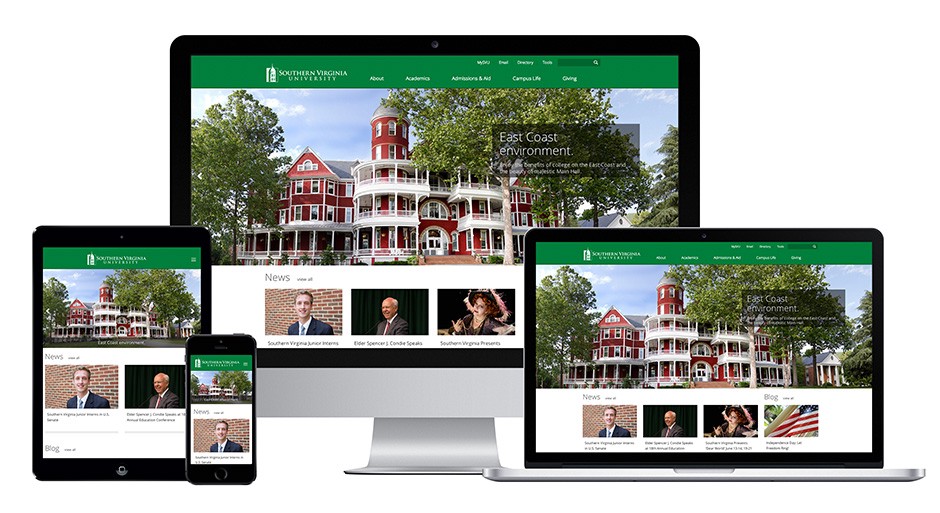News Release
Southern Virginia Launches New, Responsive Website

Southern Virginia University today launched a new website that features a responsive design, enabling the website to offer a custom experience to users on all mobile and non-mobile devices.
The new website also includes a number of other improvements, such as the change to a new content management system, updated navigation, modernized design, faster speed, improved search engine optimization, and the addition of RSS feeds for the news section of the website.
“We wanted to bring the site up to current web standards,” said Andrew King, lead web developer at Southern Virginia, who began developing the new website last year. “Mobile traffic has increased by 133 percent since 2012 and is continuing to go up exponentially. We wanted to develop a site that would be accessible to this large portion of web users, making content readily available to all users on all devices.”
King said that the site’s responsive design, providing greater accessibility to mobile devices, was key in the university’s effort “to build the site around the needs of prospective students and current students.”
The revamped svu.edu is built in WordPress, which is a change in content management systems for the university. WordPress, which is used by many universities and organizations including Duke University, Cornell University, Massachusetts Institute of Technology, University of Virginia, the New York Times and CNN, is the most-used content management system on the Internet with a market share of 60 percent.
“We feel that the change in content management systems will increase the university’s ability to modify and improve the website in-house,” said Chris Pendleton, director of communications at Southern Virginia, who oversaw the creation of the new website. “Since WordPress is also an open-source CMS, we expect this change to increase the availability of outside support, while also reducing the cost of future development.”
King said that another important feature of the new website is the updated navigation — including new dropdown menus within a fixed header — which allows users “to get to most places on the site with just one click.”
“In terms of design and coding, our goal was to bring the site up to current web standards,” said King. “We’re using CSS 3 and HTML 5, which are the modern standards for web development. We’re going for a simpler design, which is more aesthetically pleasing and will further help users find what they need quickly.”
In addition to King, who served as the primary developer of the new website, other members of the Communications team contributed to the design and development of the site, ported existing content to the new content management system, and created new content for the website.
“Our team did everything from taking photos for the website’s banner images to editing content and fixing problems on the new site,” said Pendleton. “In the future, we will continue to refine the site to meet the needs of our students, faculty and staff, as well as prospective students and other visitors to the website.”
According to King, the new website will most likely appear more prominently in online search results.
“The site uses caching and follows Google’s stated web standards very closely to improve our search engine optimization and our site speed,” said King. “Essentially, we’ve made the site faster and more accessible to newcomers.”
To submit any comments or questions about the new website, fill out the feedback form. In addition, the Communications Office created a tutorial video to show website visitors important details of the changes to the new website.
 News
News